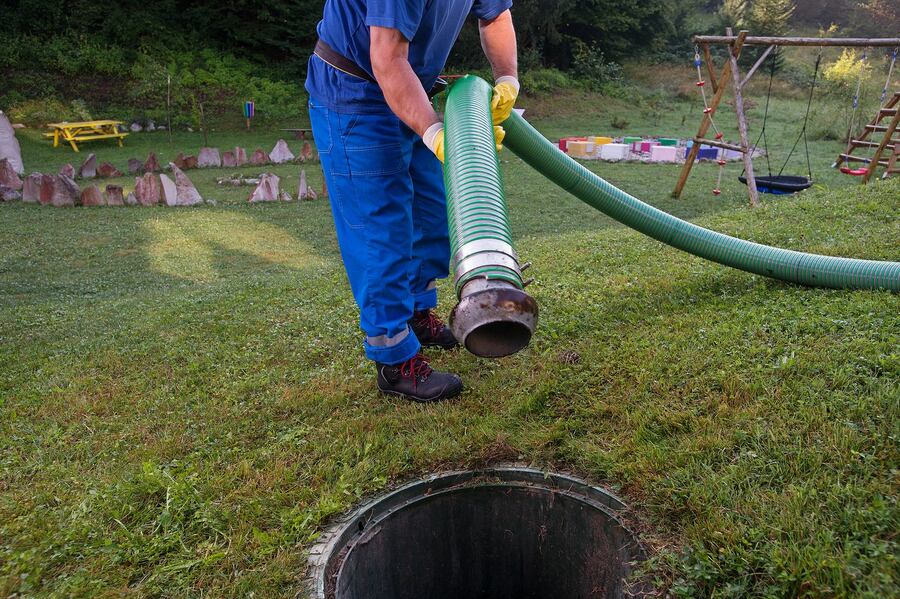Get It Safely Pumped Today
Get It Safely Pumped Today
A well-planned septic system can support the health of your property, protect the environment, and work reliably for decades when installed with care. At Septic Pumping of Raleigh, we’ve seen the difference between systems that fight the land they’re built on and those that work with it. Professional installation means fewer repairs, cleaner groundwater, and peace of mind for homeowners. If you want a septic system that serves your needs without creating long-term headaches, it pays to start with the right plan and the right installation team. Keep reading to learn how to make that happen.
A septic system’s success depends on how well it fits the natural conditions of your property. Soil type, water table depth, slope, and vegetation all affect how wastewater moves and gets treated underground. Ignoring these factors leads to drain field failure, standing water, or contamination. An experienced installer always begins with a professional site evaluation. This includes soil testing to see how quickly water drains and how well the soil can filter out harmful bacteria before it reaches groundwater. Sandy soil drains fast but needs more distance from wells and water sources. Clay soil drains slowly and can require a larger drain field or specialized equipment to avoid backups. The local water table is just as important. If it sits too close to the surface, wastewater can rise into your yard or flow into streams and ponds. Thinking about where the sun hits and where water naturally collects after rain also helps. A drain field in a shaded, soggy area will not perform as well as one with sunlight and good air flow, which helps keep the ground drier. Good planning avoids future problems and keeps the system in line with the natural movement of water and soil health.

Standard gravity-fed systems work best when there’s enough slope and well-draining soil. If the ground is flat, the water table is high, or the soil doesn’t drain well, you may need a pressure distribution system, mound system, or aerobic treatment unit. An aerobic system uses oxygen to break down waste more completely before it reaches the drain field. This can be a smart choice near lakes, rivers, or areas with sensitive ecosystems. Mound systems elevate the drain field to protect it from high groundwater. These systems require careful design and more ongoing maintenance, but they allow you to live on land that would otherwise not support a traditional septic setup. No matter which system you choose, it’s important to size it for the number of people using it and the amount of water they use daily. An undersized system will be strained from the start. A properly sized system avoids more frequent septic pumping, reduces stress on the drain field, and extends the life of the equipment.
Excavation needs to be done carefully to avoid compacting the soil around the drain field. Heavy machinery can crush the tiny spaces in the soil that let water move and filter. An experienced crew knows how to limit this damage. The slope of the pipes, the depth of the drain field trenches, and the distance from wells and water sources must match both code requirements and environmental best practices. Installers also make sure that roof drains, sump pumps, and surface runoff stay away from the drain field to prevent overloading it with water. Installing inspection ports and easy-access lids on the septic tank makes future septic tank cleaning and repairs simpler. These small touches save time, prevent yard damage during maintenance, and encourage homeowners to keep up with routine septic cleaning. During installation, protecting existing vegetation where possible helps keep the soil stable and prevents erosion. If trees or shrubs need to be planted near the drain field after installation, only species with non-invasive roots should be used.
A well-installed system is only the beginning. Ongoing care is what keeps everything working with the environment instead of harming it. That starts with regular septic tank pumping, which removes the solids that build up over time. Waiting too long between service calls can cause solids to overflow into the drain field, which clogs it and shortens its lifespan. Septic tank pumping frequency depends on the tank size, household size, and water use habits. Most homes need it every three to five years, but some may require more frequent service. Scheduling routine septic service with a reliable septic company keeps small problems from becoming more serious. Septic tank cleaning should also be paired with inspections. Professionals can look for leaks, early signs of drain field stress, or parts that are wearing out. Catching these issues early can prevent contamination of nearby wells and waterways. Everyday habits also matter. Reducing water waste by fixing leaks, installing efficient fixtures, and spreading out laundry loads can give the system time to process wastewater. Avoid flushing anything other than toilet paper, and keep grease, harsh chemicals, and non-biodegradable materials out of the drains. These steps protect the bacteria in the tank that break down waste and keep the system in balance.
A septic system can be a long-term asset instead of a constant source of trouble when it’s planned and installed with the land in mind. If you want dependable results, contact Septic Pumping of Raleigh today to schedule your next septic cleaning or septic service.
Seasonal changes show how strong a home system really is. A cold snap can slow the flow inside the drainfield. A…
Homeowners in Raleigh put a lot of care into their homes, and Septic Pumping of Raleigh sees this every day. A…
Before most people think about breakfast, the crew at Septic Pumping of Raleigh is already on the move. A new day…
When your sinks start to drain slowly or you catch a sewage smell near the yard, it might be time for…